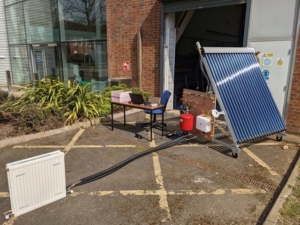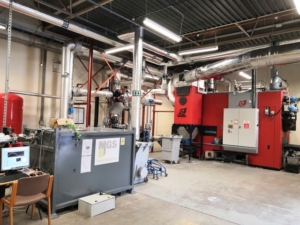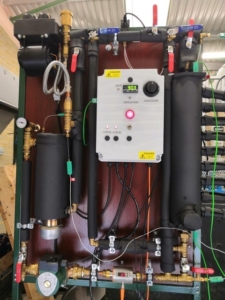Renewable heating and cooling to slash carbon emissions
07/07/2022

Domestic/commercial applications: Energy consumption in the building sector accounts for 40% of the total energy consumption worldwide. The UK has set the goal of achieving NetZero by 2050. In 2012, the UK had a total greenhouse gas emission level of 613 MtCO2e. Residential buildings and non-residential buildings have shares of 12% and 3%, respectively. There is an urgent demand to increase the share of renewable energy sources and reduce carbon emissions, which is essential to the energy efficiency policy in the UK. “Greener Buildings” is part of the UK Prime Minister’s ten-point plan (point 7) to achieve a green industrial revolution in the UK, with an aim of attracting around £11bn private investment in 2020, supporting approximately 50,000 jobs in 2030 and savings of 71MtCO2e between 2023 and 2032. At present, building cooling and heating is mostly achieved by electricity and fuel such as natural gas. Solar energy combined with thermal energy storage has the potential to meet the combined heating and cooling demand of buildings by greener means.
More recently Cranfield University and EGB Engineering have been successful in securing funding from Innovate UK for industrial research into low-carbon renewable heating and cooling systems to decarbonise public and commercial buildings. The development of thermal energy storage via phase change material, and solar evacuated tube collectors to capture renewable heat and turn them into cooling through an absorption chiller to increase the renewable share in the building cooling applications. This project has supported the construction of several components and testing its performance in a realistic environment: solar evacuated tube collectors and the heat storage system (figure 1).



Figure 1: 1.2 kW evacuated tube collector, 120kWth PCM storage connected to Cranfield heat networks and 1kW lab scale PCM capability.
Waste heat recovery: In any conventional power generation cycle (eg; steam Rankine cycle) two-thirds of the energy is dumped into the atmosphere, yet this low-quality heat can be captured and utilised to operate the thermal driven absorption chillers and provide the cooling loads to nearby buildings. This novel approach formed part of an EU FP7 funded project (MATS) to design an absorption chiller from a 1MWe turbine waste heat and understand its thermodynamic performance. The follow-on project supported by Newton-British council with EJUST to build an integrated community level system for Egypt, 10kW electricity, 1m3/day of water 10 kW cooling load including cold storage.
Overall, these activities helped to assess the market potential of this technology, and to increase the proportion of renewable energy in the heating and cooling sectors and reduce the reliance on fossil fuels. The group is exploring options for the integration of these designs into Cranfield’s own heat/cooling networks.
Categories & Tags:
Leave a comment on this post:
You might also like…
Automotive Engineering: From student to hypercar innovation at Rimac
We sat down with recent graduate Thomas Perrin, to discuss how his year on the MSc in Automotive Engineering at Cranfield University propelled him from the lecture hall directly into the ...
What this year at Cranfield really meant to me
Every Cranfield journey is unique. In this alumni reflection, Zachea Scicluna shares what her year at Cranfield truly meant, from facing uncertainty to gaining hands-on experience in industry-backed projects. I’ve been reflecting (and delaying) ...
Preparing for assignments and exams?
Sorry! We know it seems a bit mean to mention the exams in January rather than looking forward to the break before it! However, we know many of you will be thinking about your forthcoming ...
Screening for FTSE 100 companies on Bloomberg
So you’re researching an index and need some data on its constituent companies? Bloomberg’s Equity Screening tool makes light work of this, not just for the FTSE, but for indices, exchanges and sectors worldwide. Type EQS ...
Accelerating my future: How Cranfield put me on the fast track to automotive safety innovation
Hello! I’m Michaela Kaiser, and I’m thrilled to share my journey studying abroad. I’m from Calgary, Canada, and I recently graduated from Cranfield’s MSc Automotive Engineering course. My path to Cranfield ...
From Myanmar to Cranfield: My path to Renewable Energy
As someone who is passionate about sustainability, my career goal is to build a path in the renewable energy sector. My aspirations comes from the benefits of developing sustainable energy sources and ensuring energy ...






